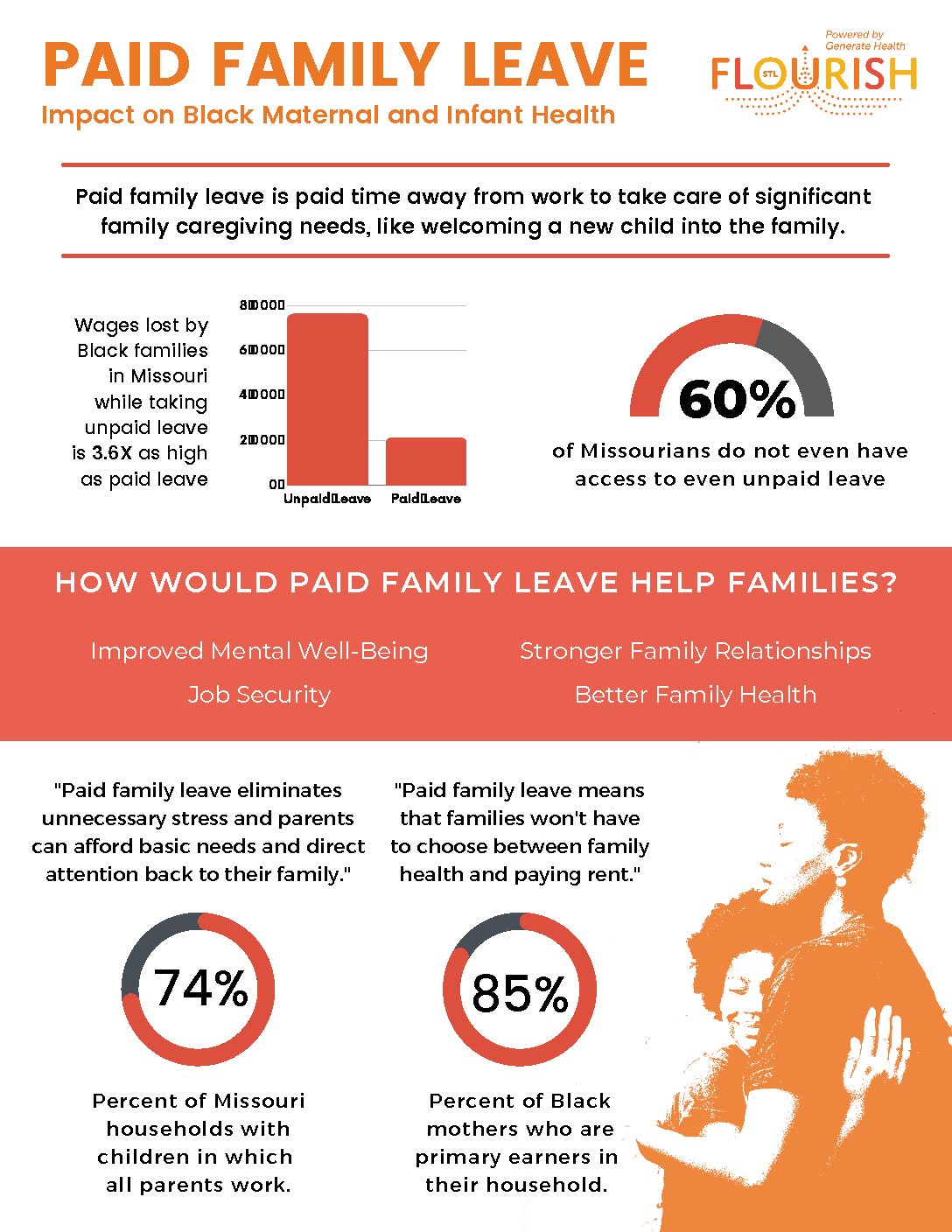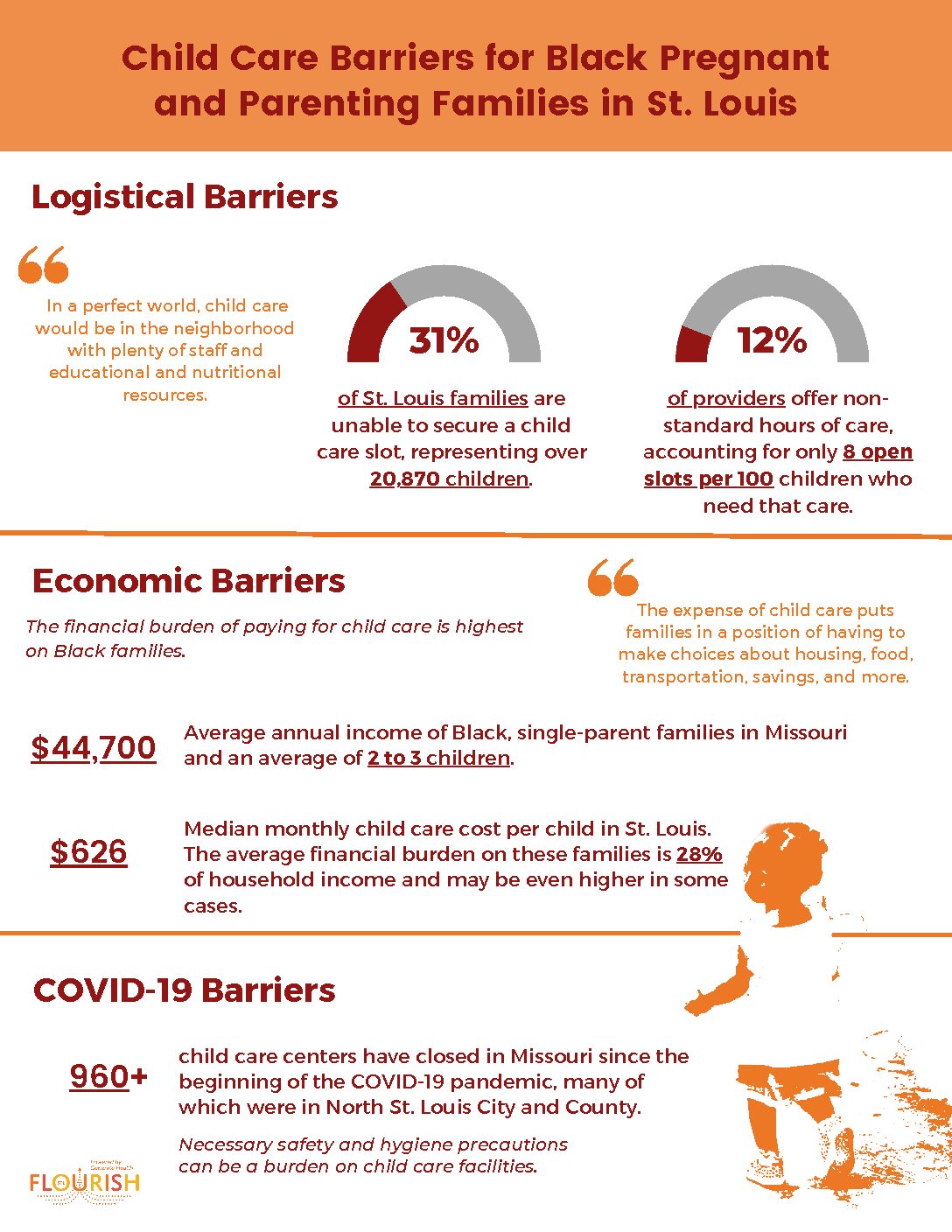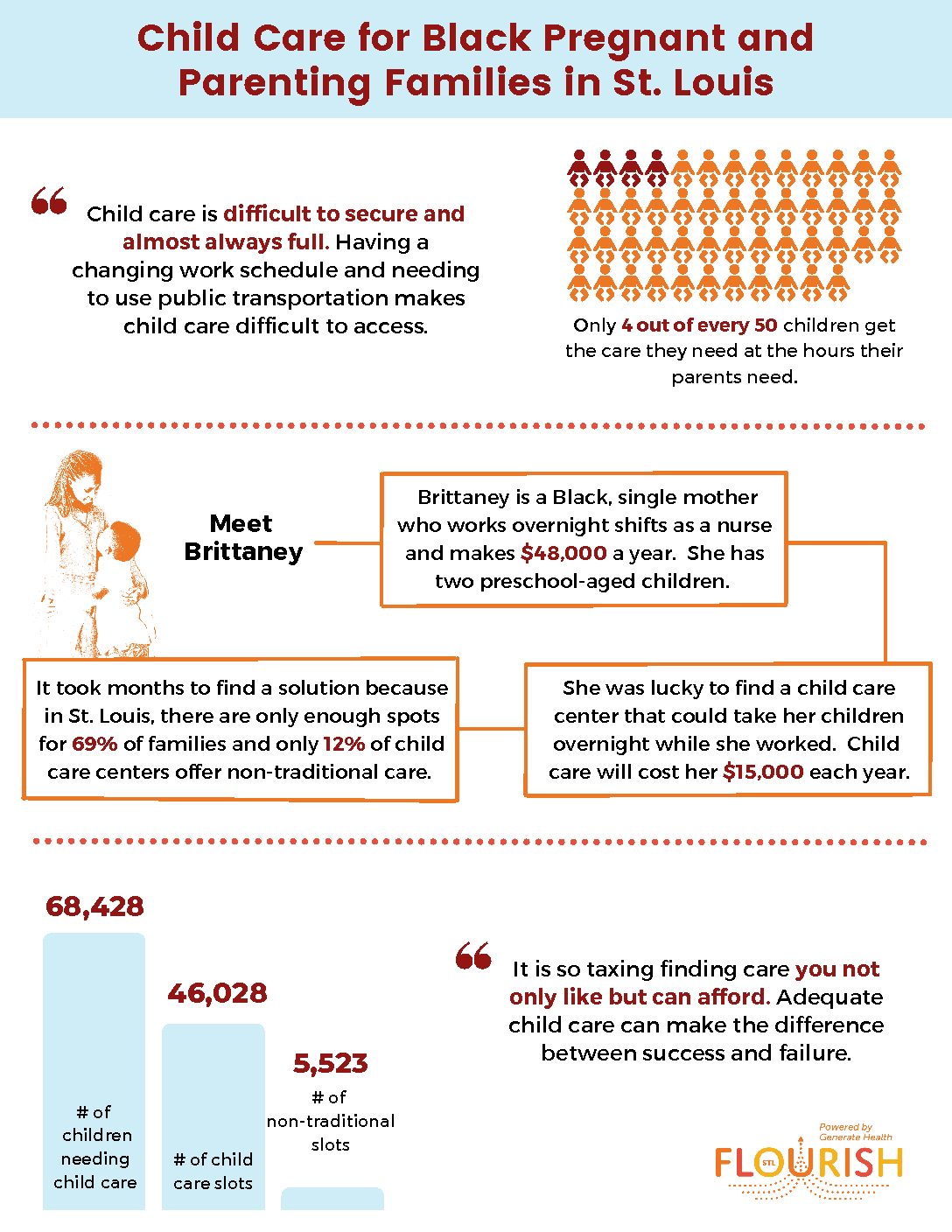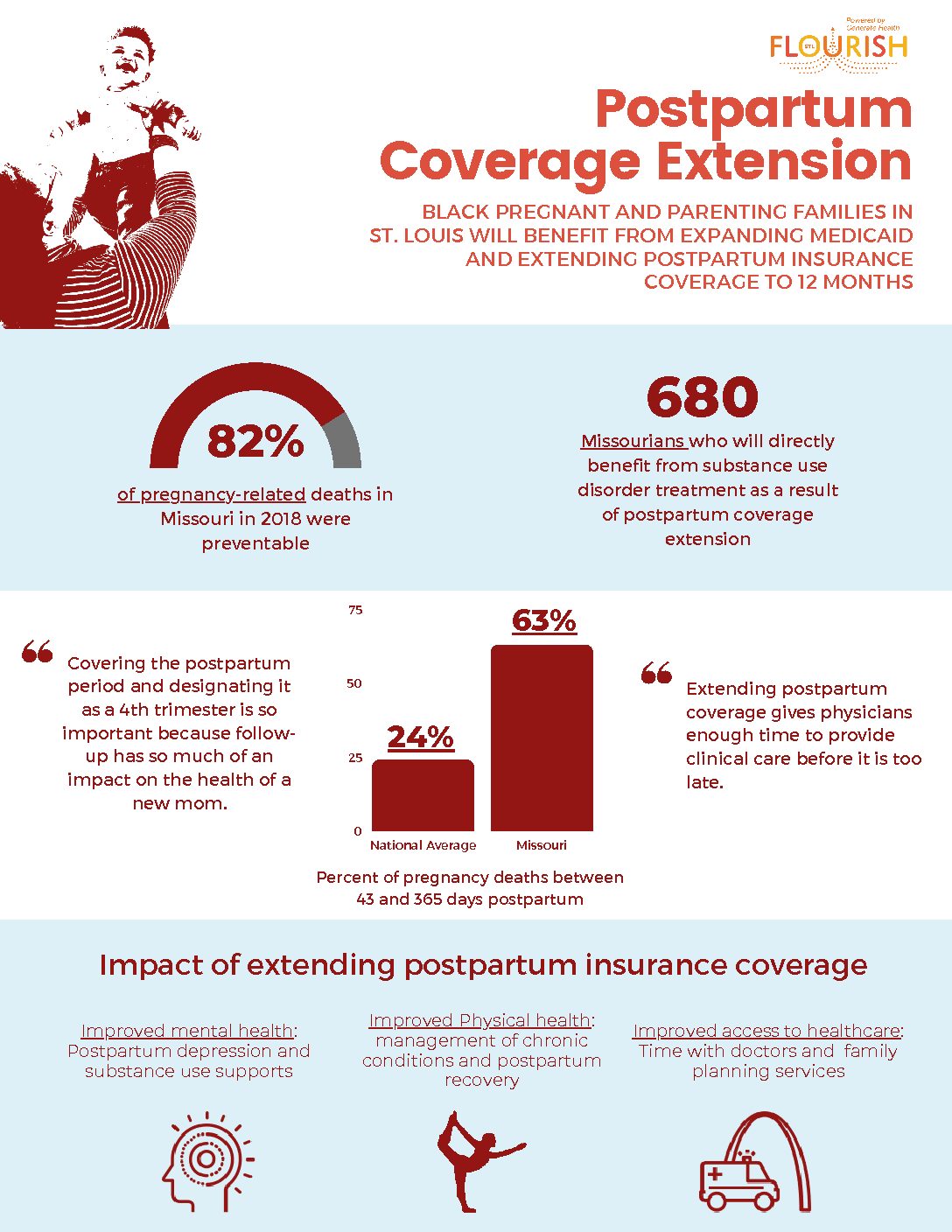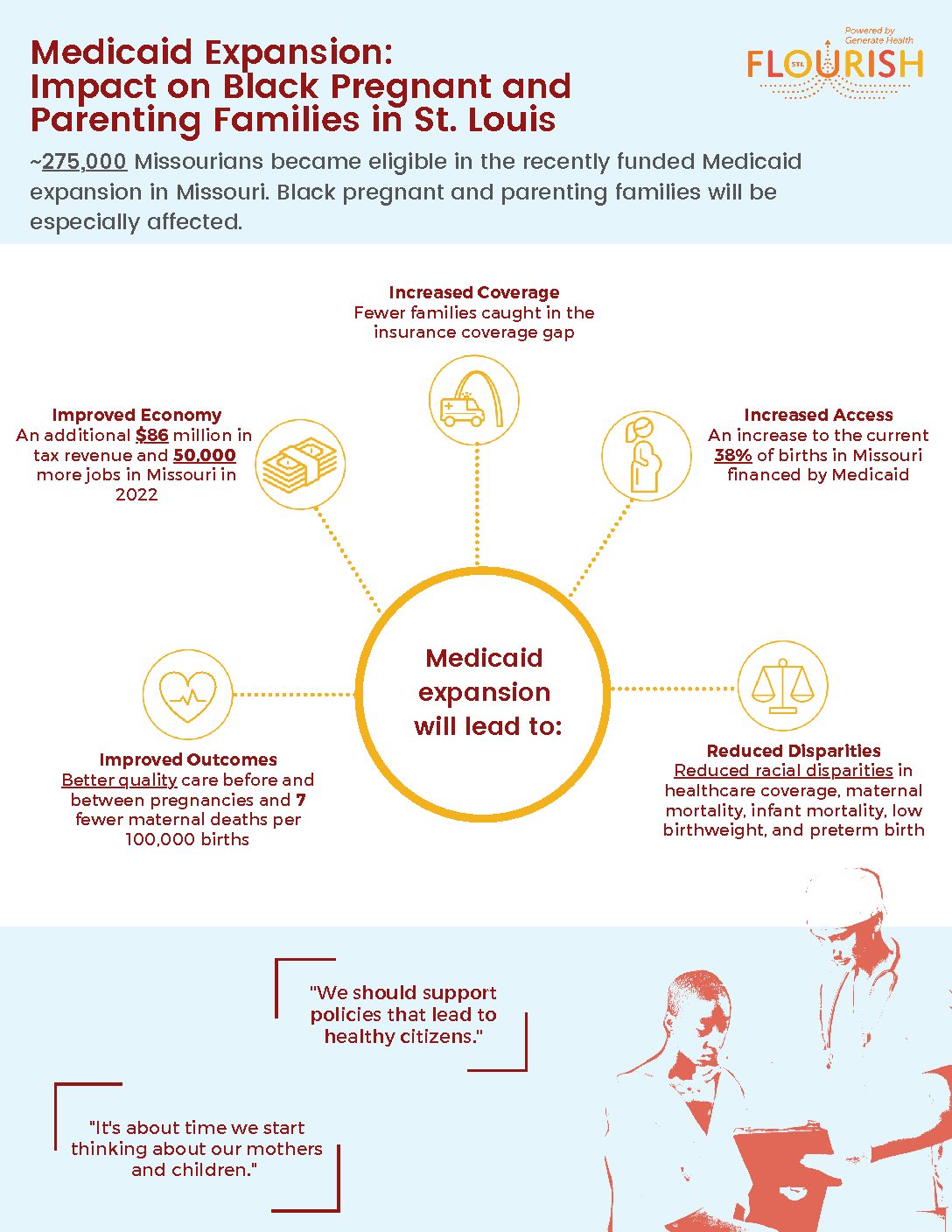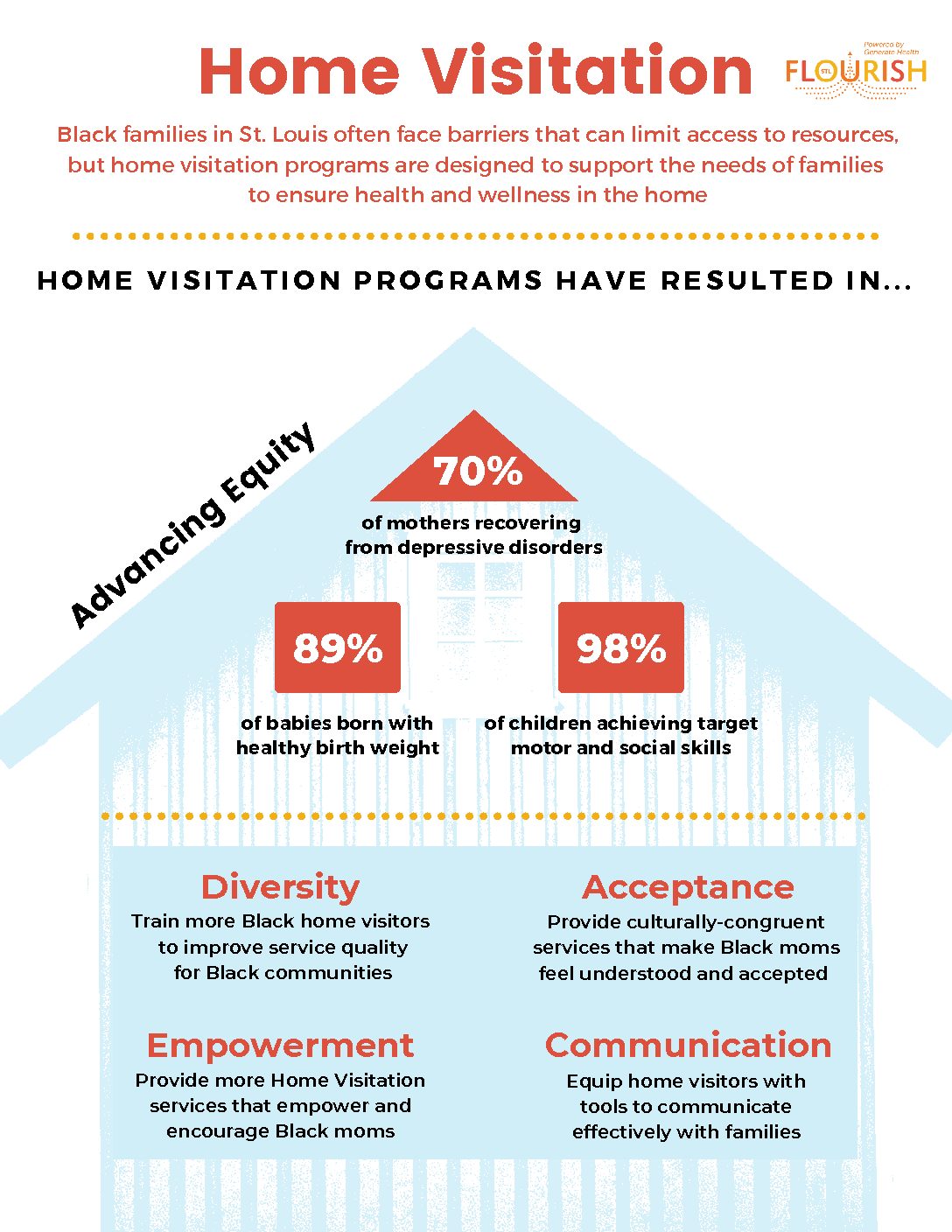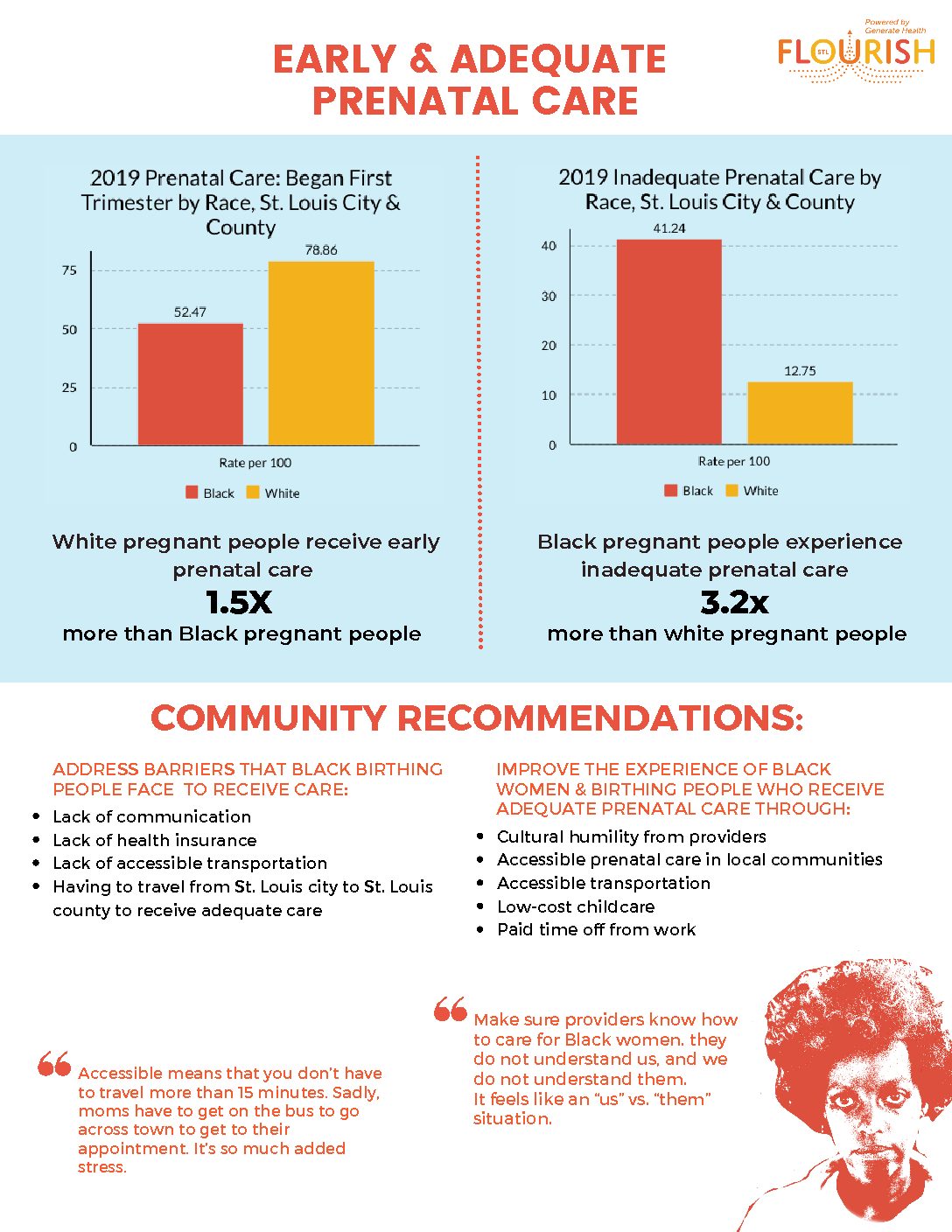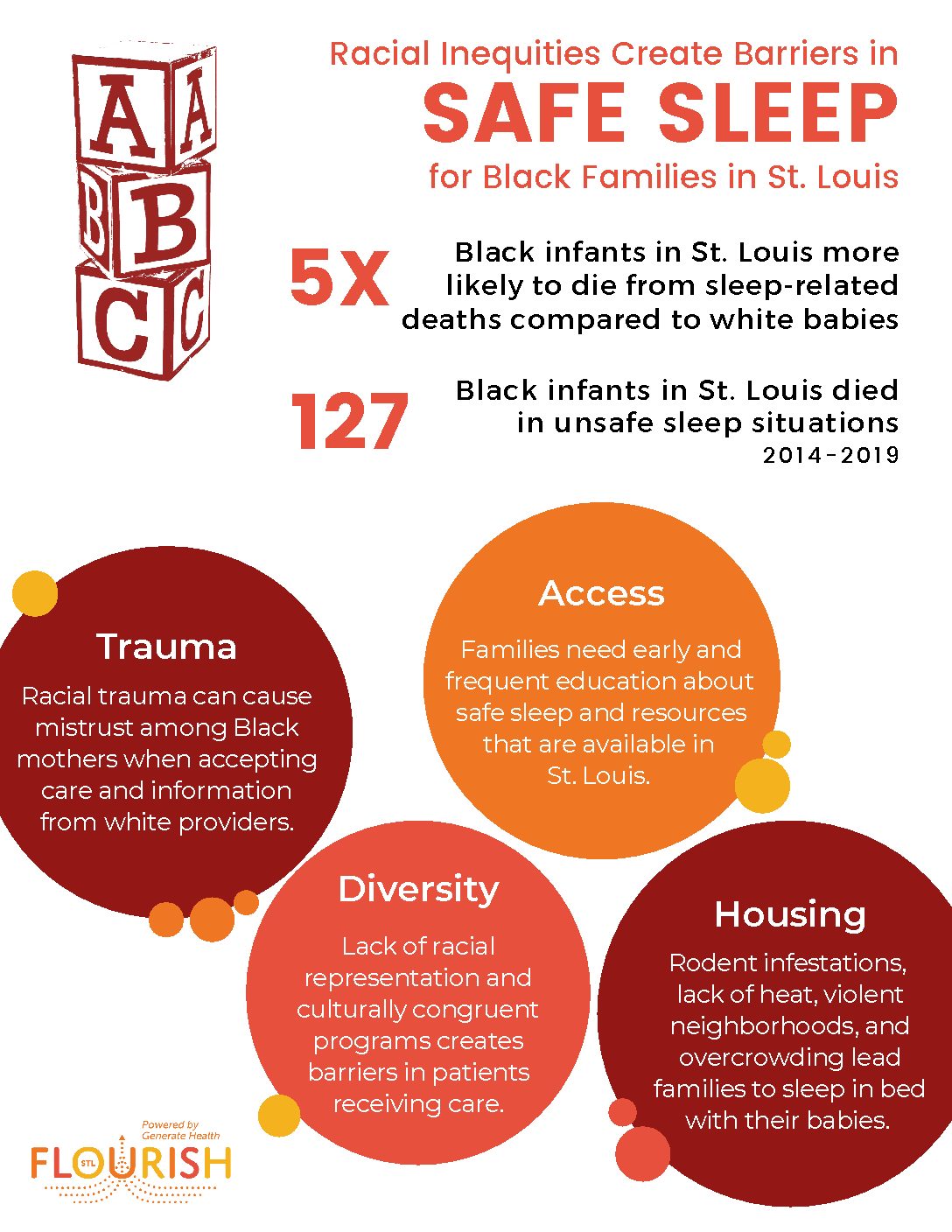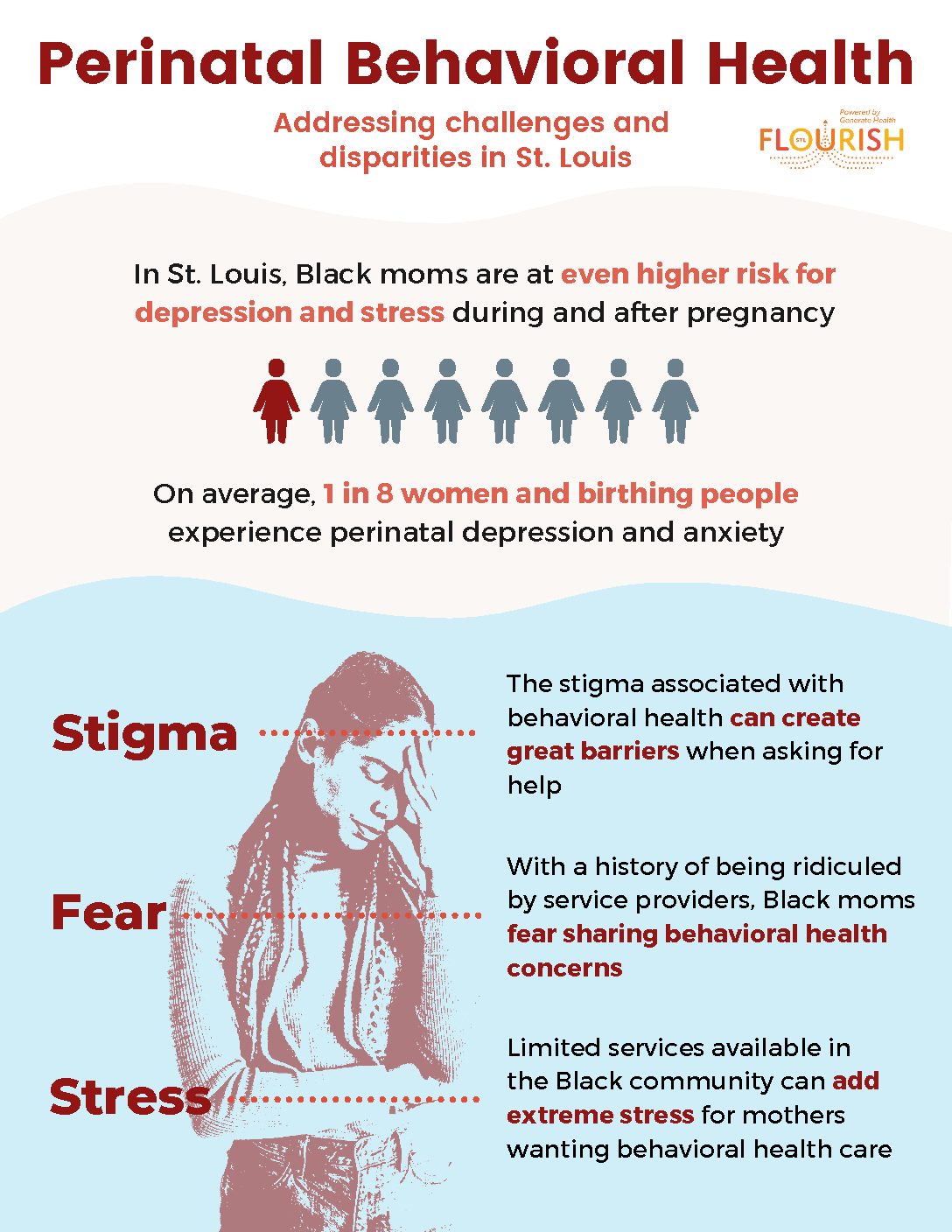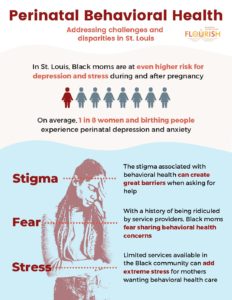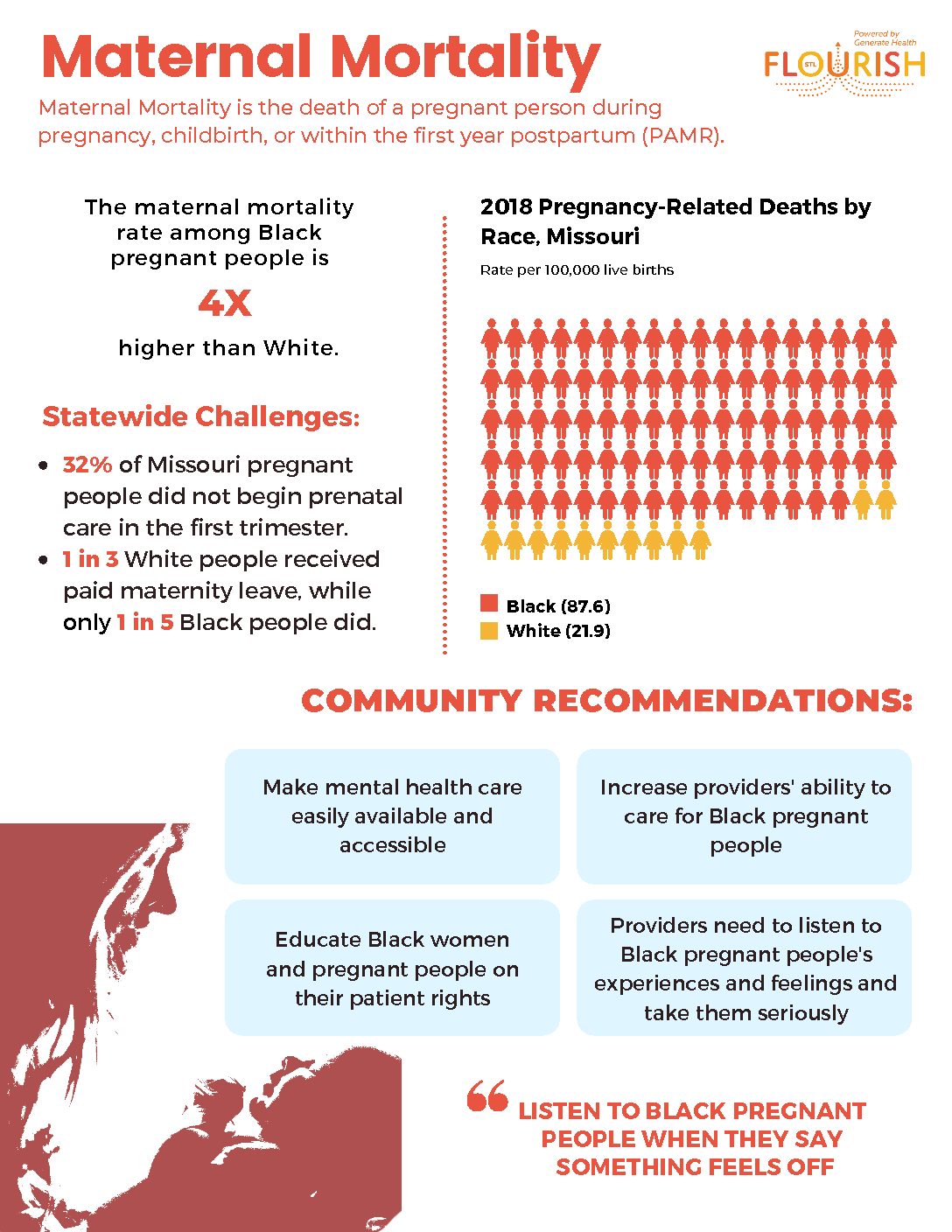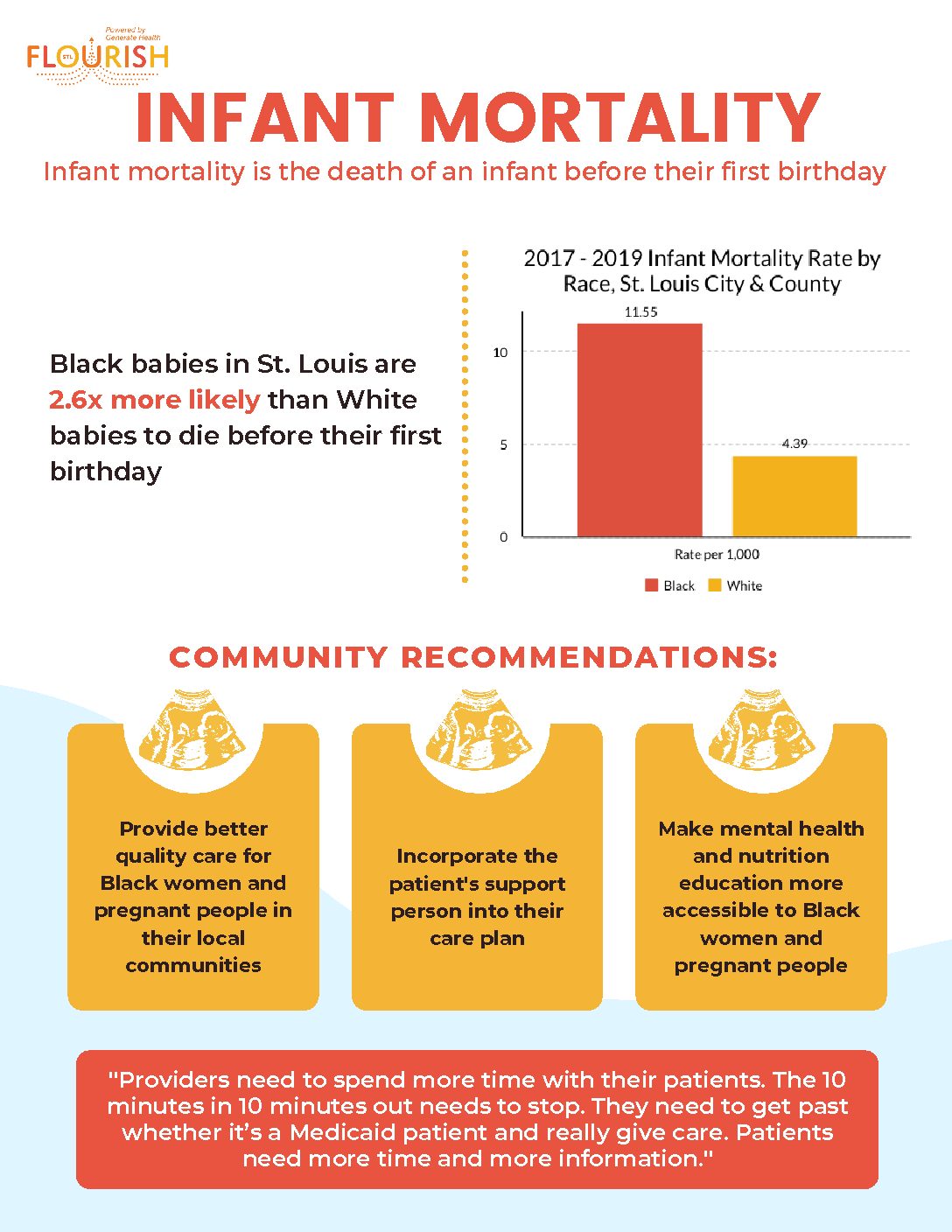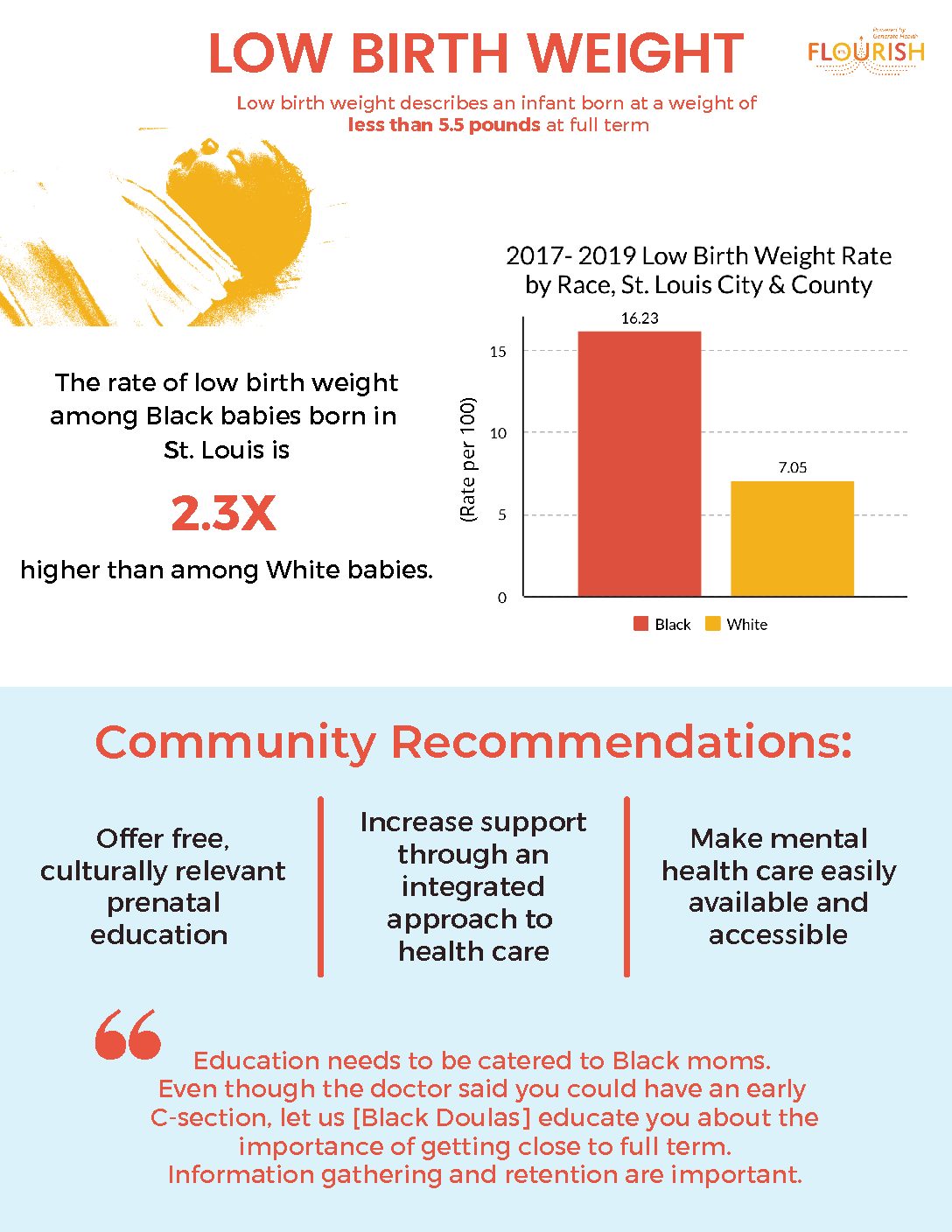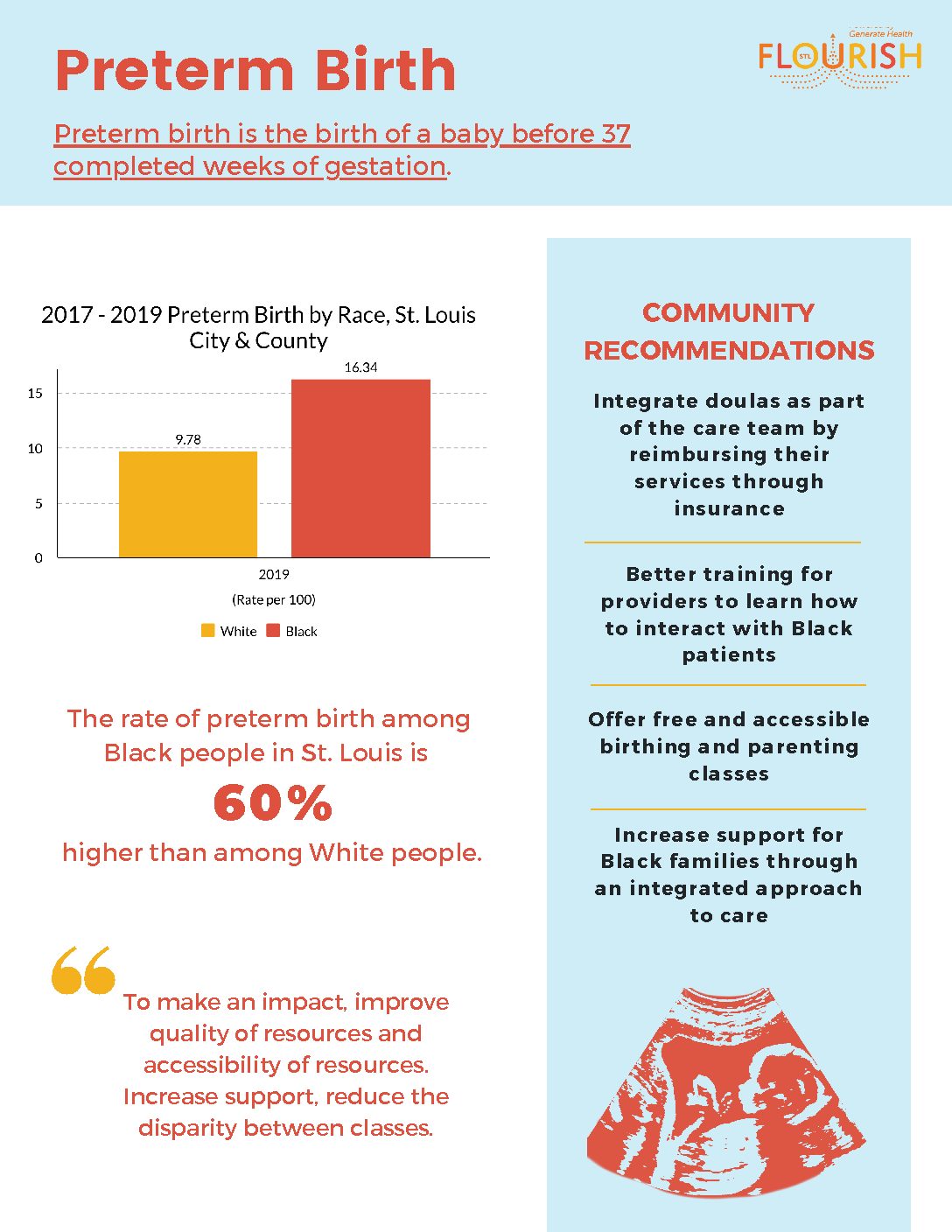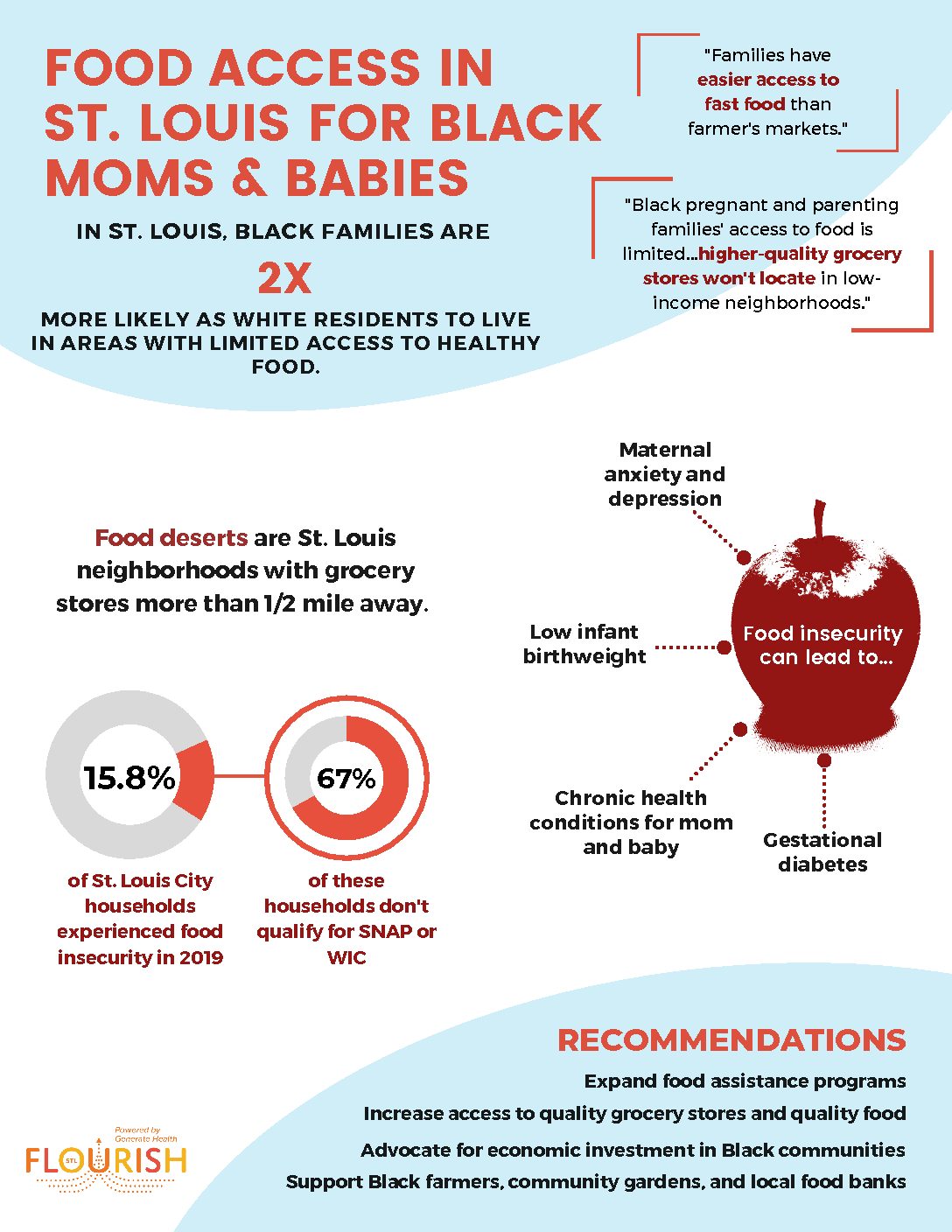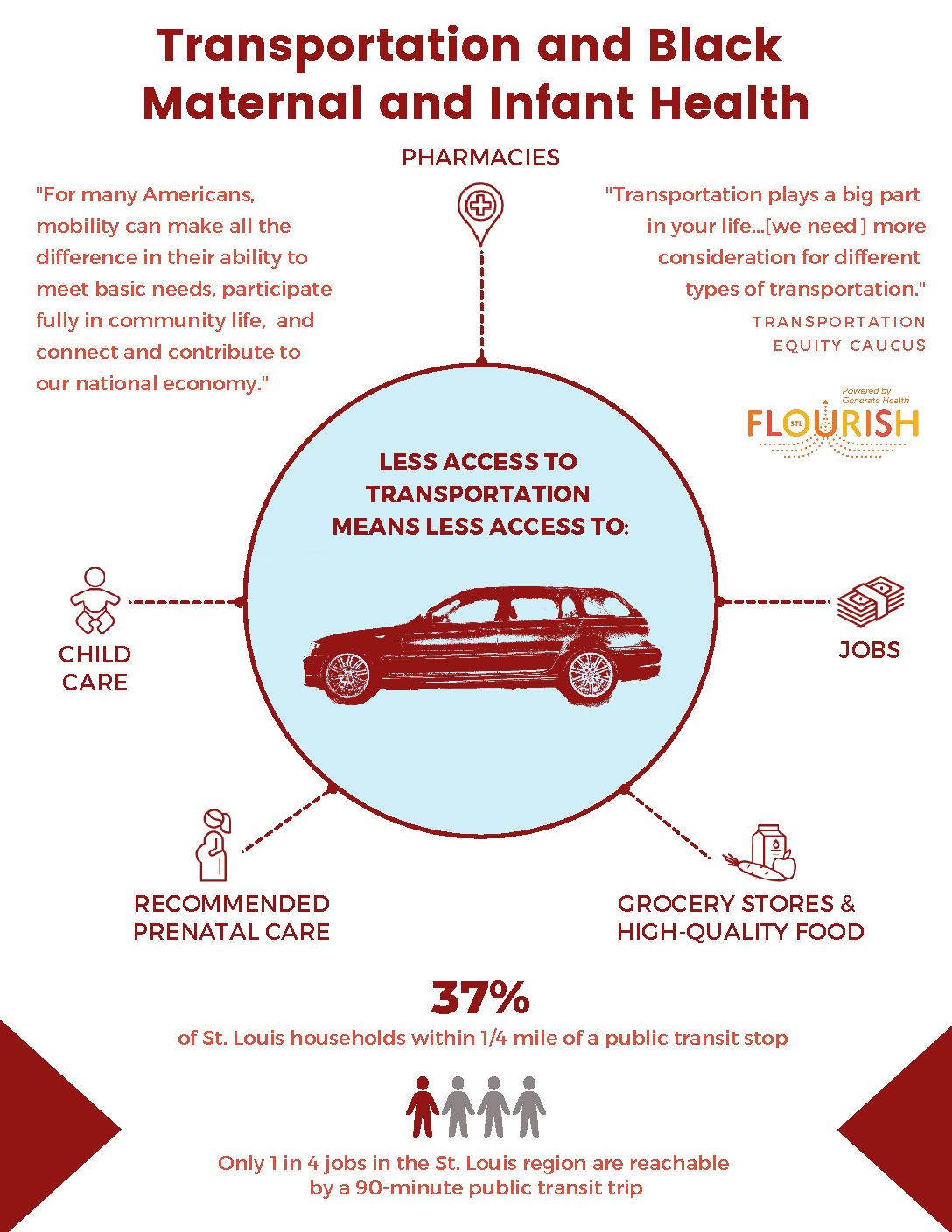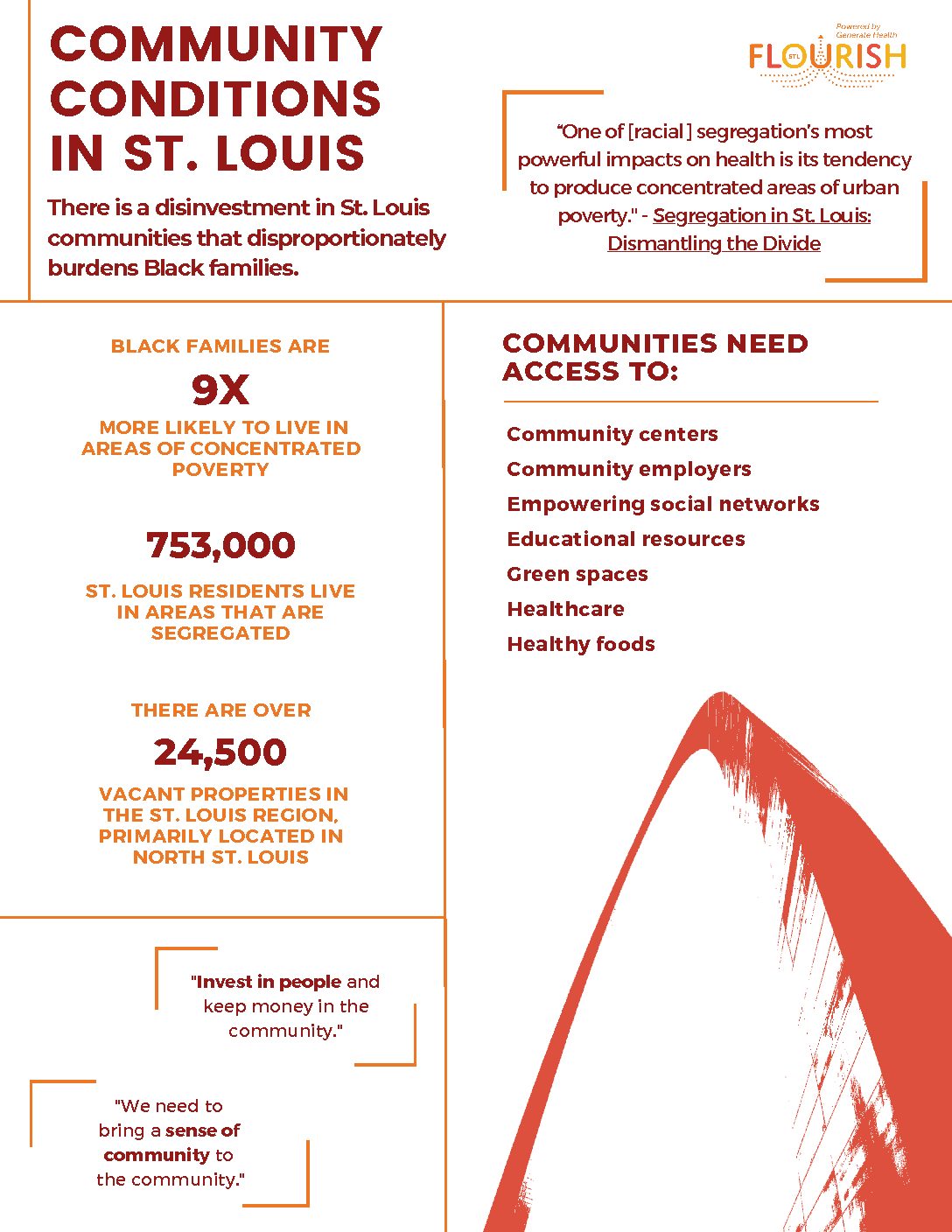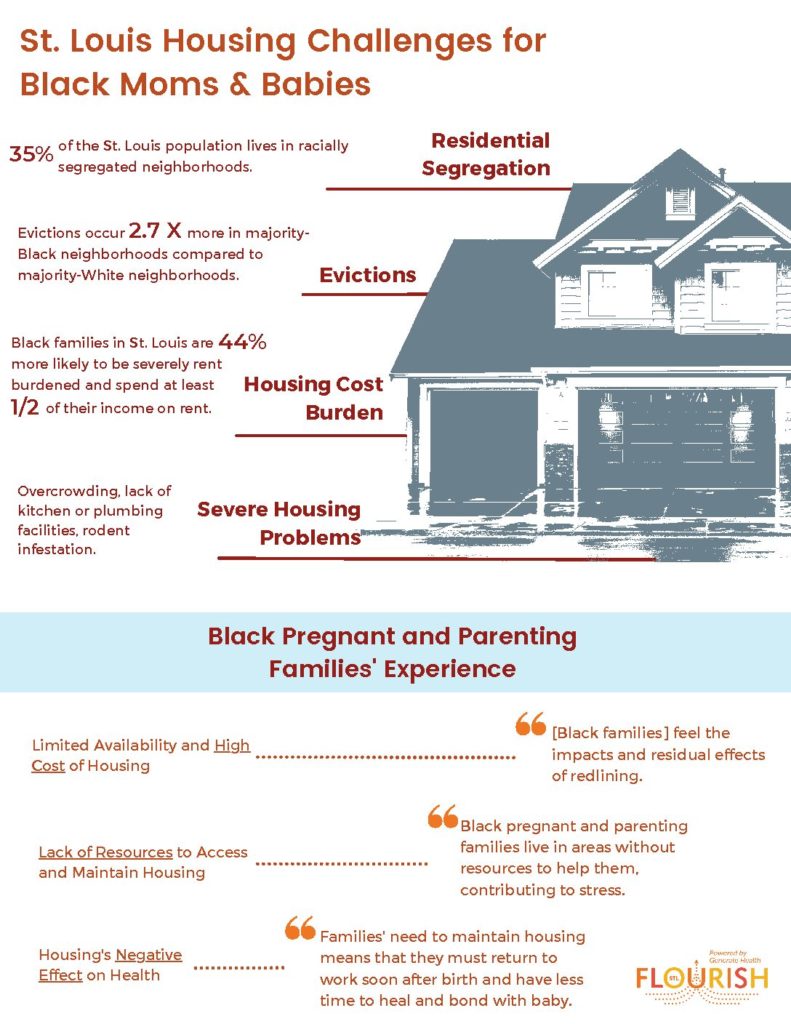Coordinated Quality Care
Access to care does not equate to quality care, and many Black individuals experience service delivery models in healthcare that are dictated by assumptions, stereotypes and racial biases. These factors, along with lifelong experiences of stress due to racism, can create unsafe and life-threatening complications for Black mothers and birthing people during and after childbirth. Black women and birthing people should have access to quality resources that help them thrive. Access to culturally congruent resources and support teams can also help reduce stress during pregnancy. Various support staff such as home visitors, doulas, safe sleep educators and perinatal behavioral health specialists, have proven to improve birth outcomes for Black women and birthing people.
The tools below explore various indicators about coordinated quality care that affect the health of individuals in the community. Indicators are disaggregated by geography in order to compare St. Louis rates to Missouri rates to United States rates. Many of these data sources are not disaggregated by race. Therefore, statistics are reflective of all populations. FLOURISH hopes that data becomes more readily disaggregated by race for future updates. If disaggregation by race is possible, the indicators will be marked and colors will be used. If there is an X shown instead of a rate, that means the data are not available at that level. These are opportunities to explore new data collection methods and sources.
Coordinated Quality Care
Safe Sleep
Babies sleep safest when they are Alone, on their Backs and in a Crib, bassinet, or portable crib. Black infants are at an increased risk of unsafe sleep related deaths. Safe sleep injuries and deaths are often a result of co-sleeping. This disparity is likely due to the lack of racial representation and culturally congruent safe sleep educators that do not understand the barriers that Black families face. These barriers can include not having space for a crib, not having access to a crib, living in a neighborhood with safety concerns and/or having a negligent landlord that doesn’t keep housing units free of rodents and pests. Increasing access for safe sleep programs that are rooted in Black culture is essential in reducing unsafe sleep disparities.
Additional Resources
Click Red Button to View Infographic
Double-Click Red Button to Download Infographic
Infant Laid to Sleep On Back
Infant laid to sleep on back is defined as the percentage of babies who are most often laid to sleep on their back. (Source: Safe Sleep First Shared Measurement; Missouri PRAMS Dashboard; CDC- PRAMS)
85.5
84.0
79.5
Infant Sleeping Alone
Infant sleeping alone is defined as the percentage of infants that do not share a sleep surface with a parent, sibling or other individual. (Source: Safe Sleep First Shared Measurement; Missouri Child Fatality Review Report, CDC- Vital Signs Safe Sleep for Babies)
67.6
XX.X
38.6
Sudden Unexplained Infant Death (SUID)
Sudden unexplained infant death (SUID) is defined as the sudden and unexpected death of a baby less than 1 year old in which the cause was not obvious before investigation. These deaths often happen during sleep or in the baby’s sleep area. (Source: Missouri Child Fatality Review Report, CDC SIDS Data)
XX
24
955
Infant Sleep-Related Suffocation and Strangulation
Infant sleep-related suffocation and strangulation is defined as the accidental suffocation and strangulation in bed that occurs when something limits a baby’s breathing, like when soft bedding or blankets are against their face or when a baby gets trapped between two objects, such as a mattress and wall. (Source: Missouri Child Fatality Review Report, CDC- Sudden Unexpected Infant Death & Sudden Infant Death Syndrome Data and Statistics)
XX
65
905
Coordinated Quality Care
Perinatal Behavioral Health
The birth and care of a new child can be stressful for parents and can create challenges for mental health and overall wellness. Access to perinatal behavioral health resources can improve maternal and infant outcomes within the Black community. Black individuals seeking care for postpartum depression may face greater barriers in accessing care like fewer culturally congruent behavioral health providers, lack of trust in the healthcare system, discrimination, or experiencing the shame and stigma of seeking behavioral health support. Black individuals may also be more likely to seek support from friends, family, and religious leaders than a trained behavioral health specialist. Since Black parents are more likely to face challenges in accessing resources, poor perinatal behavioral health outcomes are often seen at higher rates within the Black community.
Additional Resources
Click Red Button to View Infographic
Double-Click Red Button to Download Infographic
Maternal Mental Health Conditions
Maternal mental health conditions is the percentage of women with a positive screen for a mental heath condition while pregnant or up to one-year postpartum (Source: PBHI Shared Measurement System; MMHLA: Maternal Mental Health Fact Sheet)
81.0
XX
20.0
Postpartum Depression
Postpartum depression is the percentage of women with a recent live birth who reported experiencing depressive symptoms (Source: PBHI Shared Measurement; America’s Health Rankings)
57.4
14.6
13.4
Postpartum Depression Help
Postpartum depression help is defined as the percentage of individuals who sought help for postpartum depression symptoms. (Source: PBHI Shared Measurement; PRAMS, MMHLA Maternal Mental Health Fact Sheet)
27.3
13.0
25.0
Connection to Case Management for Maternal Mental Health
Connection to case management for maternal mental health is defined as the percentage of individuals who sought help for maternal mental health and got connected to case management. (Source: PBHI Shared Measurement)
40.0
XX
XX
Coordinated Quality Care
Home Visitation
Home visitation services connect parents with services in the community, provide coaching or education related to parenting a young baby or child, and provide comprehensive support depending on the needs of the family. Home visitation programs are designed to ease obstacles to family health & well-being by supporting their needs while ensuring health and wellness at home.
Additional Resources
Click Red Button to View Infographic
Double-Click Red Button to Download Infographic
Families Participating in Home Visitation
Families participating in home visitation is the number of families or households who received a home visit from a service provider. (Source: National Home Visiting Resource Center 2019 Year Book)
XX
15,473
286,108
Home Visits
Home visits is the number of evidence-based home visits provided by a service provider. (Source: National Home Visiting Resource Center 2019 Yearbook)
XX
110,699
3,211,335
New Parent Home Visit
New parent home visit is defined as the percentage of children ages birth to 3 whose parents received a new parent home visit. (Source: Kids Count Data Center)
XX
20.0
14.0
Coordinated Quality Care
Doulas
Black individuals often face barriers such as medical provider biases during the birthing process, which can lead to pregnancy complications and a poor birthing experience. Doulas have been shown to improve birth outcomes and create a more positive birthing experience for Black parents by building an emotionally supportive environment and bridging cultural and communication gaps.
Additional Resources
Click Red Button to View Infographic
Double-Click Red Button to Download Infographic
Reduction in Cesarean Sections
Reduction in cesarean sections is defined as the percent decrease of births assisted by a doula that did not result in a C-section compared to births that were not assisted by a doula (Source: American Pregnancy)
XX
XX
50.0
Reduction in Manmade Oxytocin
Reduction in manmade oxytocin is the percent decrease of births assisted by a doula that did not result in the distribution of manmade oxytocin compared to births that were not assisted by a doula. (Source: American Pregnancy)
XX
XX
40.0
Reduction of Time in Labor
Reduction of time in labor is defined as the percent decrease of births assisted by a doula with less labor time compared to the average labor time of births that were not assisted by a doula (Source: American Pregnancy)
XX
XX
25.0
Reduction in Epidurals
Reduction in epidurals is defined as the percent decrease of births assisted by a doula that did not result in a distribution of epidurals compared to births that were not assisted by a doula (Source: American Pregnancy)
XX
XX
60.0

